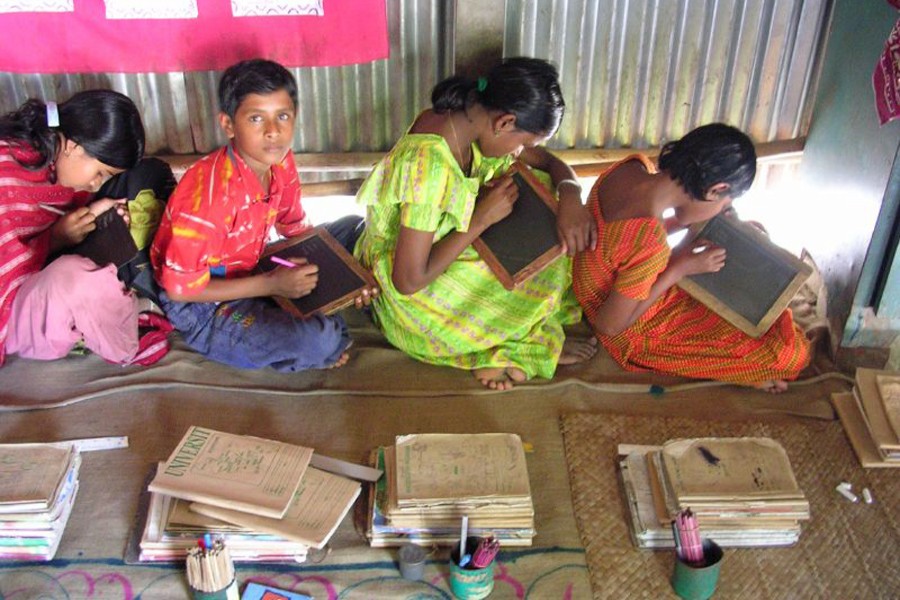Children in the poorest countries have lost nearly four months of schooling since the start of the pandemic – A report of UNESCO, UNICEF, and World Bank finds.
Schoolchildren in low- and lower-middle-income countries have already lost nearly four months of schooling since the start of the pandemic, compared to six weeks of loss in high-income countries, according to a new report published jointly by UNESCO, UNICEF, and the World Bank on Thursday.
“We don’t need to look far to see the devastation the pandemic has caused to children’s learning across the world. In low- and lower-middle income countries, this devastation is magnified as limited access to remote learning, increased risks of budget cuts and delayed plans in reopening have thwarted any chance of normalcy for schoolchildren,” said UNICEF Chief of Education Robert Jenkins.
“Prioritising reopening schools and providing much-needed catch-up classes are critical.”
The report compiles findings from surveys on national education responses to Covid-19 carried out in nearly 150 countries between June and October.
Schoolchildren in low- and lower-middle-income countries were the least likely to access remote learning, the least likely to be monitored on their learning loss, the most likely to have delays to their schools reopening and the most likely to attend schools with inadequate resources to ensure safe operations, the report finds.
While more than two-thirds of countries have fully or partially reopened their schools, 1 in 4 have missed their planned reopening date or not yet set a date for reopening, most of which are in low- and lower-middle-income countries.
Only 1 in 5 low-income countries reported that remote learning days count as official school days, recognising the low-impact of remote learning measures, compared to three-quarters of countries globally.
Of the 79 countries which responded to questions related to financing, nearly 40 per cent of low-and lower-middle-income countries have either already experienced or anticipate decreases to their country’s education budget for the current or next fiscal year.
While most countries reported that student learning is being monitored by teachers, a quarter of low- and lower-middle-income countries are not tracking children’s learning.
Half of the respondents in low-income countries reported to not having adequate funds for safety measures such as handwashing facilities, social distancing measures and protective equipment for students and teachers, compared to 5 per cent of high-income countries.
Around 2 in 3 of low-income countries were introducing measures to support access or inclusion for those at risk of exclusion.
More than 90 per cent of high- and upper-middle-income respondents required teachers to continue teaching during school closures, compared to less than 40 per cent of low-income country respondents.
“The pandemic will notch up the funding gap for education in low and middle-income countries. By making the right investment choices now, rather than waiting, this gap could be significantly reduced,” said UNESCO Assistant Director-General for Education Stefania Giannini.
Other findings include:
Almost all countries included remote learning in their education response, in the form of online platforms, TV and radio programmes and take-home packages.
9 in 10 countries facilitated access to online learning, most frequently through mobile phones or offering internet access at subsidised or no cost, but the coverage of this access was extremely varied.
6 in 10 countries provided materials to help guide parents in home-based learning, while 4 in 10 countries provided psychosocial counselling to children and caregivers during school closures. These efforts were more common among high-income countries and in environments where resources were already available.
“Despite widespread efforts, there are large differences in countries’ capacity to provide children and youth with effective learning. And there are probably even wider differences within countries in the educational stimulation children and youth have experienced,” said World Bank Global Director for Education Jaime Saavedra.
"We were worried about learning poverty before the pandemic and also about the inequality in learning opportunities. Now the learning baseline is lower, but the increase in inequality of opportunities could be catastrophic. The task of reigniting the learning process is extremely urgent,” the World Bank Global Director for Education said.


